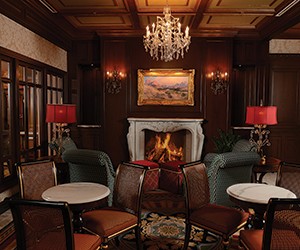When it comes to rewarding top-tier incentive qualifiers, organizations are once again willing to invest in extraordinary experiences that recognize outstanding achievement, say incentive and resort executives. At the same time, they’re also noting a shift in what defines a truly exceptional experience for such groups.
“The over-the-top, spectacle events that were popular before the recession have not come back,” says Jeff Broudy, executive vice president of Philadelphia-based United Incentives and a former chairman of the Incentive Research Foundation. “Instead, companies are taking a more tactical approach. They’re investing in authentic, meaningful experiences that people can’t do on their own.”
As an example, Broudy cited a recent incentive program held in Rome that included chartering the Vatican museums for an exclusive evening tour.
“There wasn’t a lot of folderol connected with this event, it was preceded by a simple Roman meal of pasta and pizza,” he says. “However, it was a very special experience that the attendees won’t forget.”
Patrick Sullivan, president of AlliedPRA in New York and a former president of SITE, also notes that companies are redefining what constitutes a top-tier event or experience.
“Incentives are coming back, but companies are much more cautious with their spin,” he says. “Things are more low-key and they’re not flashing their name around. And it’s more personalized.”
For a recent incentive program in the Hamptons, Sullivan arranged for the group to be transferred via helicopter from John F. Kennedy International Airport to the stylish Southampton Inn. The central event was an old-fashioned clambake on the beach with music and a sand artist who sculpted a sandcastle with the company logo. After a feast of lobster and clams, the group danced the night away under the stars.
“It was a great evening, but not overly fancy,” he says. “We’re finding that clients like the cachet of a destination like the Hamptons, but they also want things to be easygoing and comfortable. This is especially true for younger qualifiers from tech companies; they really don’t want anything fussy.”
Mindful of changing demographics, Sullivan and other incentive planners are constantly looking for adrenaline-pumping options that especially appeal to younger qualifiers. For an upcoming program, he’s arranging for participants to don rubber suits and ride jet skis in the waters around the Statue of Liberty.
Jim Schultenover, president of Associated Luxury Hotels International, also notes the importance of providing out-of-the-box activities for today’s qualifiers. As an example, he cites Gateway Canyons Resort & Spa in Gateway, Colo., where the options range from paleontologist-led walks through dinosaur fossils fields to riding through the Red Rock Canyons in high-performance autos.
While golf remains a staple part of resort incentive programs, Schultenover says customized golf outings with a creative twist are replacing the group-wide tournaments of past years. Like Sullivan, Schultenover notes the importance of providing choices that address the preferences of multiple generations.
“Whether it’s golf or any other resort activity, you want to give people the option of participating or not,” he says. “It’s no longer about doing things as one big group. And you want to add something creative and exciting like transporting people to a special golf course by helicopter.”
The Gift of Giving Back
Perhaps in line with the desire for authenticity, experiences with a corporate social responsibility (CSR) component remain an important part of many incentive programs, according to Melissa Van Dyke, president of the Incentive Research Foundation, which tracks trends in the incentive industry.
“In our studies among seasoned incentive travelers, CSR events consistently rank high, often as the top experience,” she says.
For resort incentives, CSR can be a natural extension of adventure activities related to the surrounding environment, according to Schultenover. At Terranea Resort in Rancho Palo Verdes, Calif., the oceanfront property offers several imaginative ways for groups to learn about Pacific marine life and take part in preserving it.
“The resort has created an activity called kayakorkeling which combines kayaking and snorkeling with a naturalist to learn about tide pools and kelp beds,” Schultenover says. “Participants can also engage in sea mammal rescue efforts such as helping to rehabilitate an injured sea lion.”
Other popular CSR activities enable participants to connect with the local culture and community just beyond the resort grounds. During an incentive trip in the Dominican Republic, a program organized by United Incentives got the group involved with efforts to improve conditions for local Little League baseball teams that often lack funds for uniforms or good equipment.
“We collected new uniforms and equipment for the kids and brought in pro players to help us distribute them,” Broudy says. “We watched some of the games. Some people in the group got their kids to collect money through their own Little Leagues, so it made their families and communities feel good, too.”







